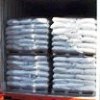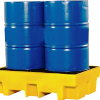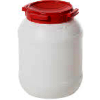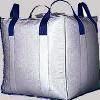Pure Lactobionic Acid & BP Grade Manufacturers Suppliers, India
Anmol Chemicals are manufacturers of Specialty Chemicals and Pharmaceutical Excipients, in India. Anmol Chemicals Group has manufacturing facilities spread across India, representatives in Houston Chicago USA and toll manufacturers in China. We make IP, BP, USP, Ph Eur, FCC or Food Grade, ACS, AR or Analytical Reagent Grade, LR or Laboratory Reagent Grade and Pure Grades of various chemicals. All our items are analyzed to meet the required standards.
Our manufacturing facility is FDA GMP approved and ISO-9001, ISO 14000, OHSAS 18000, ISO 22000, FSSAI HACCP certified. We are offering products manufactured as per Kosher and Halal approved method. We are pre-registered with "Reach" for export to European countries.
CAS No.: 96-82-2, EC Code EINECS: 202-538-3, Molecular Weight: 358.30, Chemical Formula: C12H22O12

Lactobionic acid (4-O-β-galactopyranosyl-D-gluconic acid) is a sugar acid. It is a disaccharide formed from gluconic acid and galactose. It can be formed by oxidation of lactose. Lactobionic acid is also used in the cosmetics industry as an antioxidant and in the pharmaceutical industry as an excipient for formulation.
Lactobionic Acid BP Grade
Ph Eur
C12H22O12 (acid form)ii358.3ii96-82-2
C12H20O11 (d-lactone)ii340.3ii5965-65-1
DEFINITION
Mixture in variable proportions of 4-O-b-D-galactopyranosyl-D-gluconic acid and 4-O-b-Dgalactopyranosyl-D-glucono-1,5-lactone.
Content: 98.0 per cent to 102.0 per cent (anhydrous substance).
CHARACTERS
Appearance: White or almost white powder.
Solubility: Freely soluble in water, slightly soluble in glacial acetic acid, in anhydrous ethanol and in methanol.
mp: About 125C with decomposition.
IDENTIFICATION
A. Infrared absorption spectrophotometry.
Comparisonilactobionic acid CRS.
If the spectra obtained show differences, dissolve the substance to be examined and the reference substance separately in water, dry at 105C and record new spectra using the residues.
B. Thin-layer chromatography.
Test solution: Dissolve 10 mg of the substance to be examined in water and dilute to 1 ml with the same solvent.
Reference solution: Dissolve 10 mg of lactobionic acid CRS in water and dilute to 1 ml with the same solvent.
Plate TLC silica gel plate.
Mobile phase concentrated ammonia, ethyl acetate, water, methanol.
Application: 5 μl.
Development: Over 3/4 of the plate.
Detection: Spray 3 times with ammonium molybdate solution and heat in an oven at 110C for 15 min.
Results: The principal spot in the chromatogram obtained with the test solution is similar in position and colour to the principal spot in the chromatogram obtained with the reference solution.
TESTS
Appearance of solution: The solution is clear and not more intensely coloured than reference.
Specific optical rotation: + 23.0 to + 29.0 (anhydrous substance).
Dissolve 1.0 g in 80 ml of water and dilute to 100.0 ml with the same solvent. Allow to stand for 24 h.
Reducing sugars: Maximum 0.2 per cent, calculated as glucose.
Dissolve 5.0 g in 25 ml of water with the aid of gentle heat. Cool and add 20 ml of cupricitric solution and a few glass beads. Heat so that boiling begins after 4 min and maintain boiling for 3 min. Cool rapidly and add 100 ml of a 2.4 per cent V/V solution of glacial acetic acid and 20.0 ml of 0.025 M iodine. With continuous shaking, add 25 ml of a mixture of 6 volumes of hydrochloric acid and 94 volumes of water and, when the precipitate has dissolved, titrate the excess of iodine with 0.05 M sodium thiosulphate using 1 ml of starch solution, added towards the end of the titration, as indicator. Not less than 12.8 ml of 0.05 M sodium thiosulphate is required.
Heavy metals: Maximum 20 ppm.
Water: Maximum 5.0 per cent, determined on 0.50 g.
Total ash: Maximum 0.2 per cent.
Dissolve 0.350 g in 50 ml of carbon dioxide-free water, previously heated to 30C. Immediately titrate with 0.1 M sodium hydroxide and determine the 2 equivalence points potentiometrically.
The first equivalence point (V1) corresponds to the acid form of lactobionic acid and the second equivalence point (V2 - V1) corresponds to the d-lactone form.
1 ml of 0.1 M sodium hydroxide is equivalent to 35.83 mg of C12H22O12.
1 ml of 0.1 M sodium hydroxide is equivalent to 34.03 mg of C12H20O11.
The sum of the 2 results is expressed as a percentage content of lactobionic acid.
Manufacturers
ANMOL CHEMICALS
S-8, SARIFA MANSION, 2ND PRINCIPAL SHAIKH HASAN MARG, MUMBAI 400009, INDIA
TEL: (OFF) 91-22-23726950, 23774610, 23723564. FAX: 91-22-23728264
e-mail: info@anmol.org
Copyright and Usual Disclaimer is Applicable
Exporters to USA, UAE, Europe, South Africa, Tanzania, Kenya, Egypt, Turkey, Nigeria, Uganda, Brazil, Chile, Argentina, Dubai etc.
Representatives in New York, Houston - Texas, Chicago - Illinois, Los Angeles.
Fast Selling IP BP USP ACS FCC Food Grades of Chemicals by Anmol Chemicals
Aluminum Chloride ---------- Ammonium Sulfate ----- Ammonium Persulfate
Aluminum Potassium Sulfate - Ammonium Chloride ---- Ammonium Bicarbonate
Ammonium Carbonate --------- Benzyl Alcohol ------- Boric Acid
Benzoic Acid --------------- Borax; Sodium Borate - Calcium Chloride
Calcium Hydroxide ---------- Calcium Acetate ------ Calcium Butyrate
Calcium Lactobionate ------- Calcium Levulinate --- Calcium Saccharate
Carbamide Peroxide --------- Citric Acid ---------- Calcium Phosphate
Calcium Oxide -------------- Calcium Sulfate ------ Chromic Chloride
Cupric Chloride ------------
Ferric Chloride ------------ Ferric Nitrate ------- Fumaric Acid
Gentian Violet ------------- Glacial Acetic Acid
Lactobionic Acid ----------- Magnesium Butyrate
Magnesium Oxide ------------ Magnesium Chloride --- Magnesium Sulfate
Malic Acid ----------------- Maleic Acid ---------- Manganese Chloride
Manganese Sulfate ---------- Methylene Blue ------- Oleic Acid
Octyldodecanol -------------
Propylene Carbonate -------- Potassium Acetate ---- Potassium Carbonate
Potassium Hydroxide -------- Potassium Chloride --- Potassium Phosphate
Potassium Bitartrate ------- Propylene Carbonate -- Selenious acid
Sodium Molybdate ----------- Sodium Perborate ----- Sodium Phosphate
Sodium Propionate ---------- Sodium Acetate ------- Sodium Bicarbonate
Sodium Hydroxide ----------- Sodium Chloride ------ Sodium Thiosulfate
Sodium Selenite ------------ Urea ----------------- Zinc Chloride
Other Best Selling Products
Ammonium Bromide ----------- Ammonium Phosphate --- Barium Chloride
Butylated Hydroxyanisole --- Butylated Hydroxytoluene
Calcium Nitrate Nitrite ---- Calcium Propionate --- Copper Sulfate
Ceric Ammonium Nitrate ----- Cinnamaldehyde ------- Isatoic Anhydride
Directly Compressible Calcium Carbonate ----------- Encapsulated Citric Acid
Encapsulated Fumaric Acid -- Encapsulated Sodium Bicarbonate -
Encapsulated Sorbic Acid
Potassium Bromide ---------- Potassium Iodide ----- Potassium Nitrate Nitrite
Sodium Bromate ------------- Skatole -------------- Sodium Butyrate
Sodium Nitrite & Nitrate --- Sodium Bromide ------- Sodium Diacetate
Sodium Formaldehyde Bisulfite Strontium Chloride -- Stannous Chloride
TBHQ Tertiary Butylhydroquinone
Lactobionic Acid
Commercial Pure & BP Grade, CAS 96-82-2












